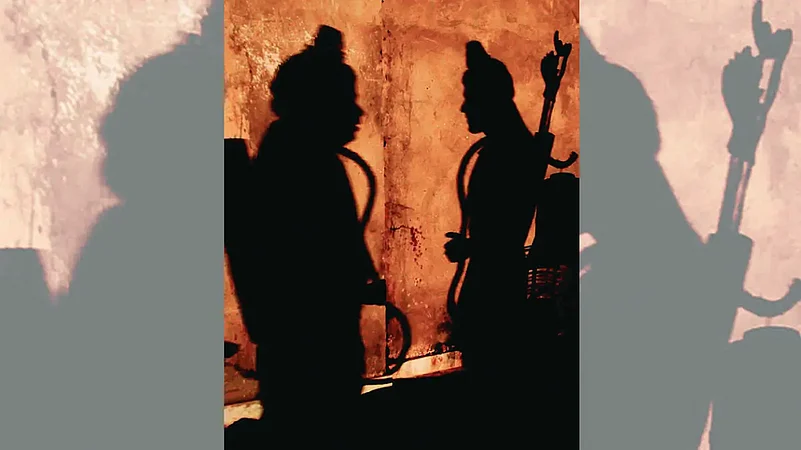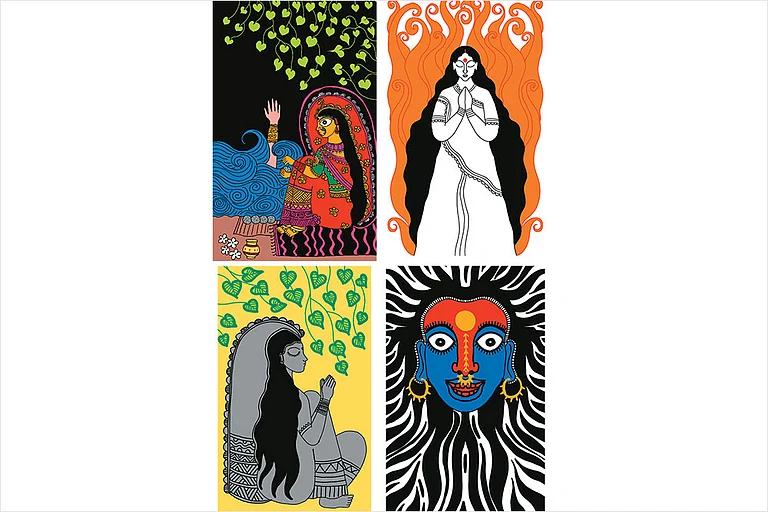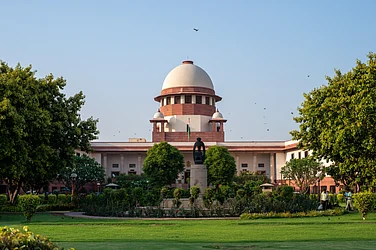This article was part of the Outlook issue 'The Many Ramayanas' dated 10 October, 2022. To read more articles from the issue, click here
I have been asked to respond to the question, “Who is Ram?” The question is simple but the answers to it are complex, more so because there are multiple answers, rather than an answer. Over the centuries, these many answers have come to us in texts, in songs, in paintings, in dance, in every medium of expression, both religious and secular. Ram has captured our imaginations so much so that we tell his story in whatever forms are available to us. Ram appears variously in all these art forms, indicating that there are many Rams. Or rather, Ram means different things to different people.
For millions of people in India and across the world, Ram, the hero of the Ramayana, is God, an avatar of Vishnu who took human form at the cusp of the Treta and Dwapar Yug to stabilise dharma in the world of humans. As the prince of Ayodhya, Ram undergoes many hardships but stands firm in righteousness at all times. For believing Hindus, this makes him the moral exemplar, the ideal man, willing to sacrifice his own happiness for what he knows to be good and true. He willingly forgoes his birth right as heir to the throne, destroys those who have strayed from the path of dharma, gives up his beloved wife because his citizens doubt her integrity and establishes righteousness in Kosala.
But there are other millions in India and across the world who are not Hindu, who do not believe that Ram is god. They also read the Ramayana and come to admire the man who lives with the burden of great expectations, who suffers and endures the deepest sadness of human life, who remains unwavering in his commitment to what he believes to be right. These people consider the moral code that Ram lives by and upholds at all times, no matter the price he will have to pay. They may not agree with Ram’s ethical principles, but by truly engaging with his story, they are called upon to confront their own behaviour and think about, if only momentarily, the basis on which they themselves act. Ram, therefore, becomes the impetus to examine oneself as well as the cultural values and beliefs that create personal moralities.
Many among these millions see Ram and his story as perpetuating a patriarchal culture, where maleness and masculinity are accorded the highest value. Still others see the Ramayana as a story of essentially kshatriya dharma, a code and interlocking system of mores that the warrior caste must live by, which includes hierarchies, kingship, war and conquest. If the Ramayana is read as primarily patriarchal and/or casteist, a belief in or admiration for Ram as an ideal becomes problematic. As women or non-Hindu or not kshatriyas, we find ourselves excluded from the world in which Ram stands tall. We fall outside the parameters that Ram defines and exemplifies as the maryada purushottam of a culture. Such exclusions result most often in more Ramayana stories, and these set up still other ways of thinking about Ram, who he is and what he may mean.
Some may not agree with Ram’s principles, but by engaging with his story, they are called upon to confront their own behaviour and think about the basis on which they themselves act.
It is precisely in these responses to Ram, which come from within and without mainstream Hinduism, that a spectacular Ramayana tradition has been created, a multi-vocal and pluralist tradition that defies the canonisation of a single text, version or portrait. Ram stories have been told by Hindus, Buddhists, Jains and Muslims, by women, Dalits, Dravidas and Adivasis. They have been told in cultures that lie far from where the story was born, and are told with every new technology available, in languages spoken by a few hundred people as well as those spoken by entire nations. In each of these, Ram reflects the time and place of the telling, and the ideology of the teller. In Buddhist versions, Ram is a bodhisattva, who delays his own enlightenment in order to help other creatures. In Jain Ramayanas, Ram is an illustrious being who adheres to the Jain creed of non-violence and so it is Lakshman who kills Ravan. Within Hinduism too, Ram’s story has been modified countless times—Bhavabhuti’s Uttararamacharita changes the tragic separation at the end of Valmiki’s story and reunites Ram and Sita on earth; Tulsidas amplifies Ram’s divinity and effects his reunion with an equally divine Sita in heaven; and Kamban ends his story of Ram with a triumphal coronation in Ayodhya, after Ravan is killed in battle.
It seems that each of us who chooses to retell the story of Ram believes that we can tell it anew, such that it addresses our concerns and needs, and that we can see ourselves in a story, which has previously excluded us. In a sense, what we want is for this magnificent text, with its fundamentally enigmatic hero, to see us. It is Ram that we respond to when we retell the story.
And with that, we can posit yet another answer to the question of who Ram is. Ram is who we want him to be. He occupies our imagination, and with or against whom we define ourselves.
ALSO READ: Lesson On Environment From Ramayan
(This appeared in the print edition as "Defining THE ENIGMA")
(Views expressed are personal)
Arshia Sattar works with myths, epics and story traditions of the Indian subcontinent. She teaches at various universities in India and abroad
























